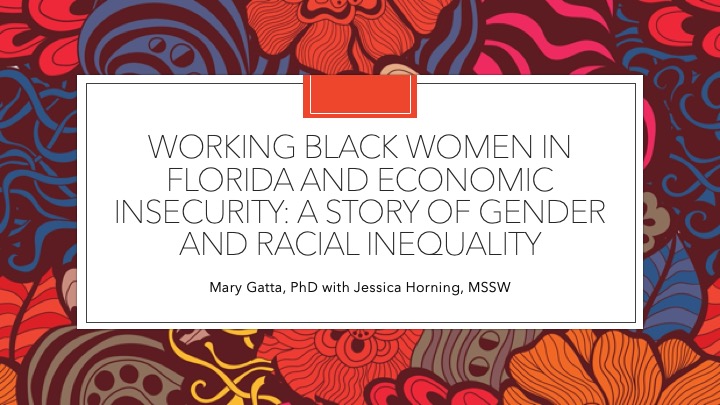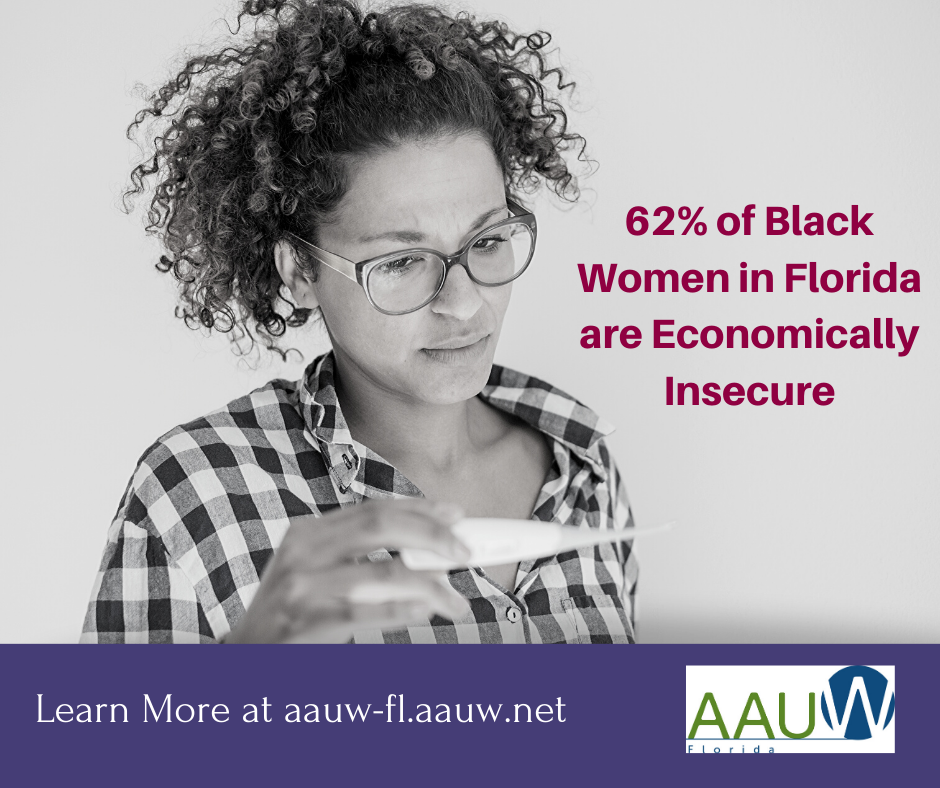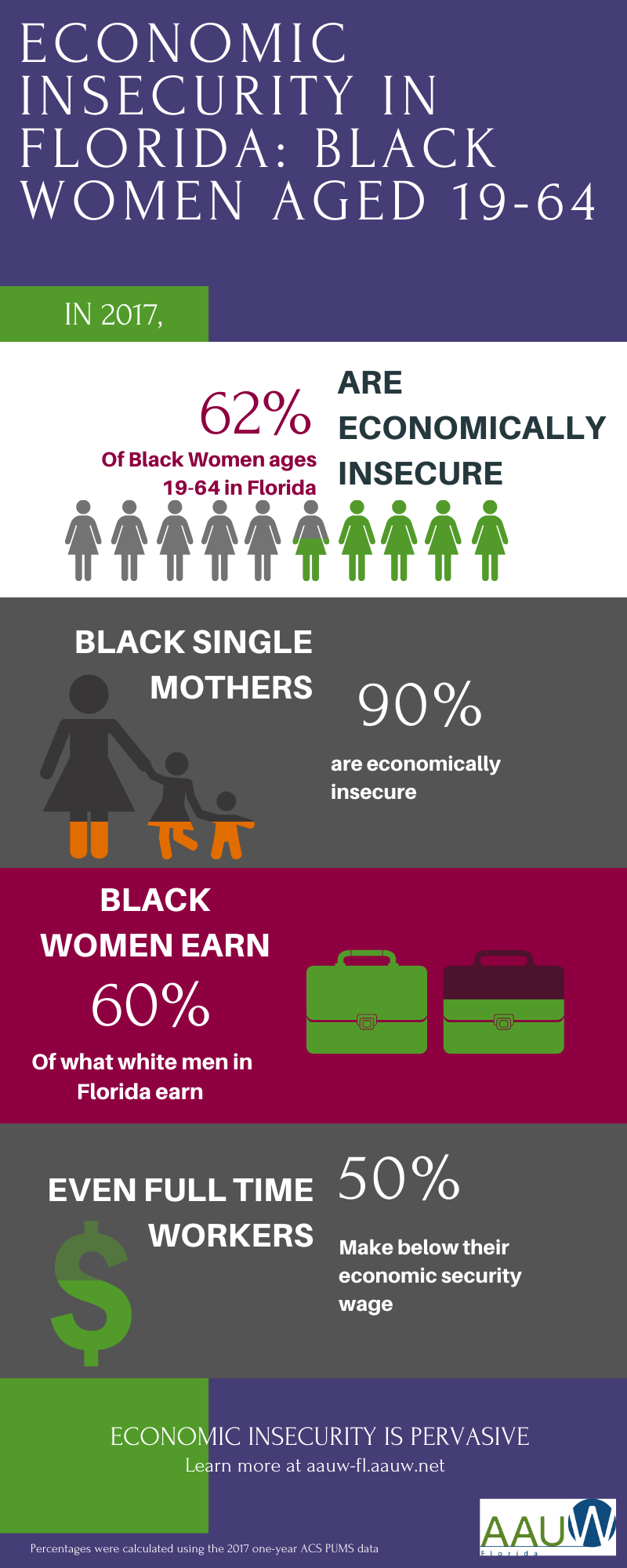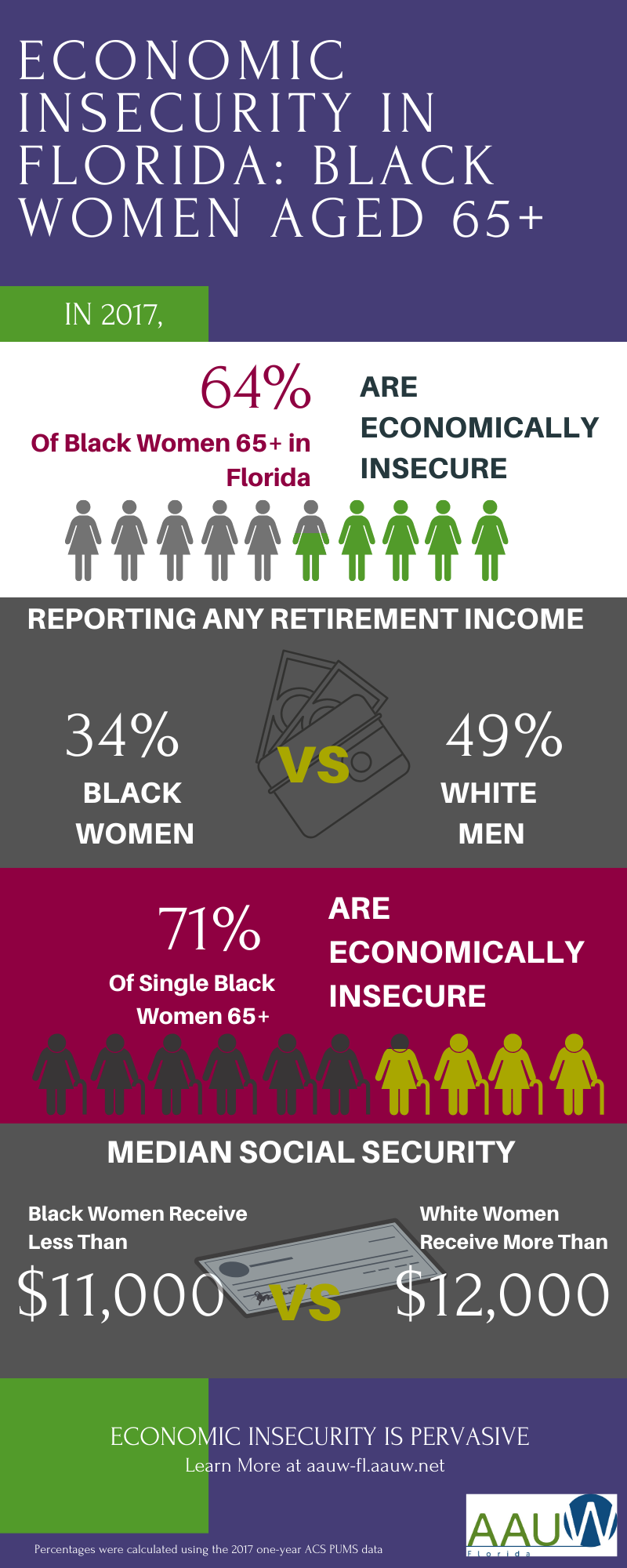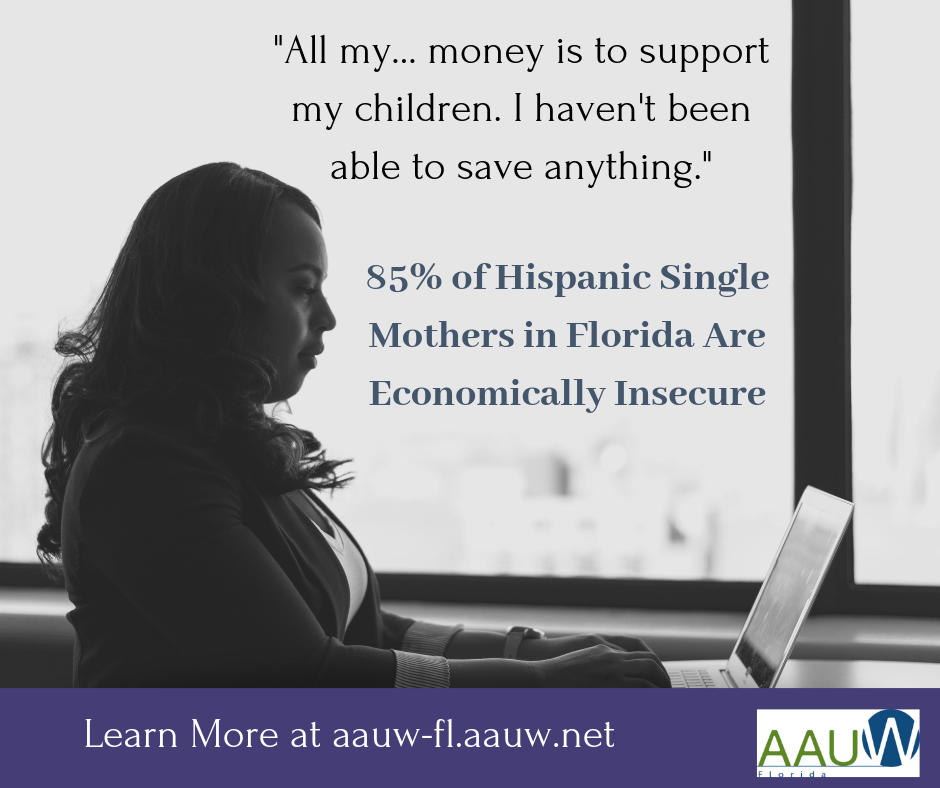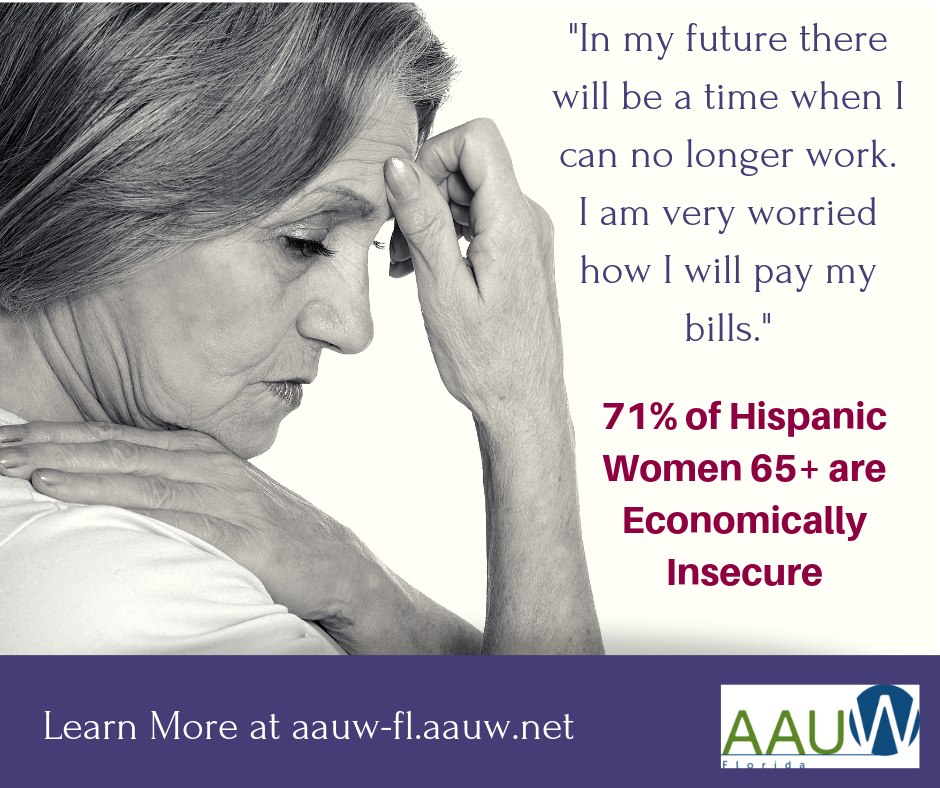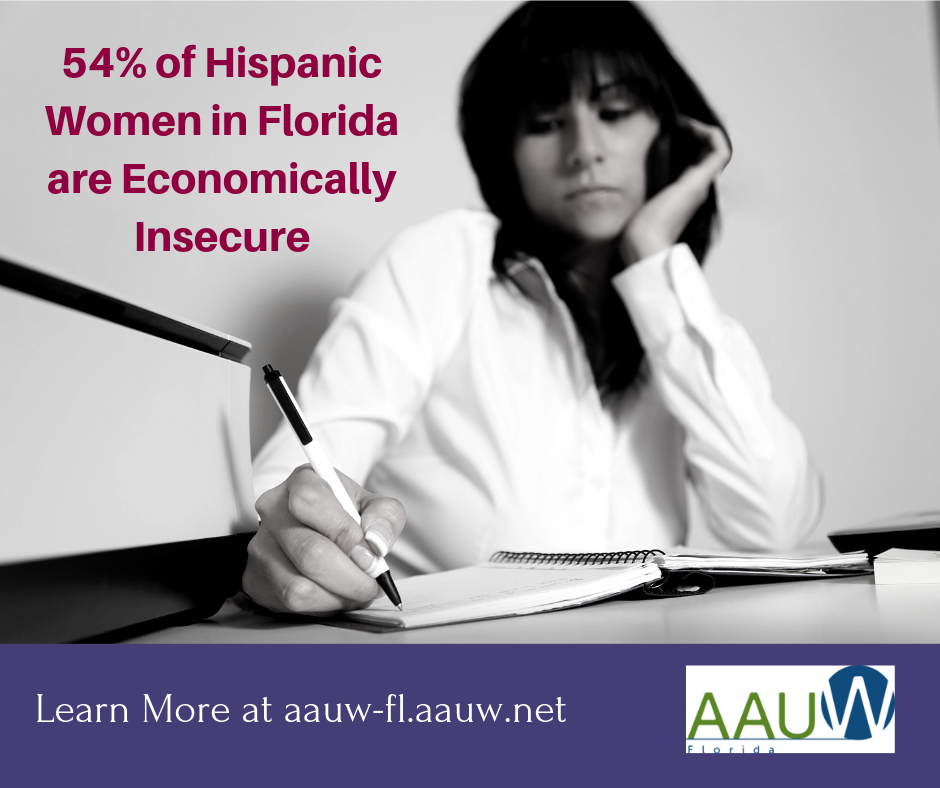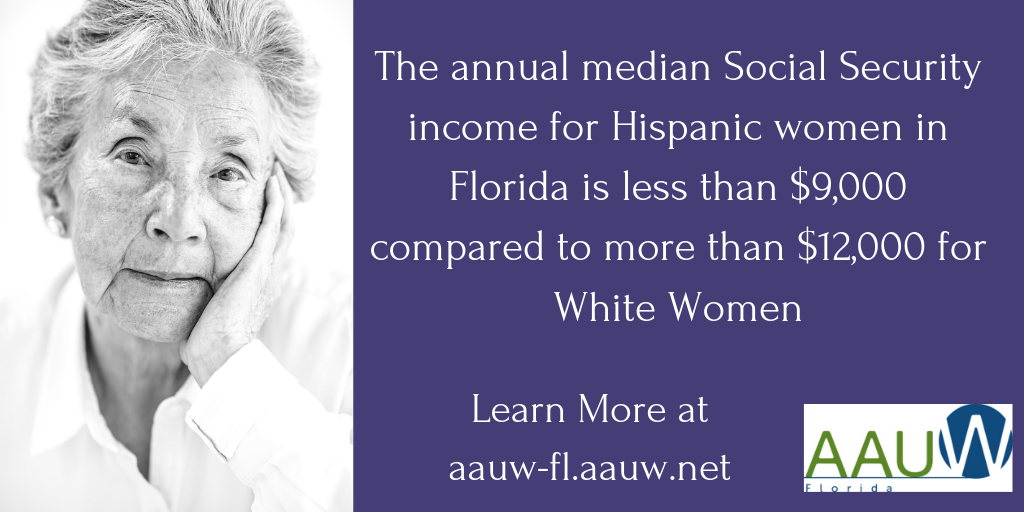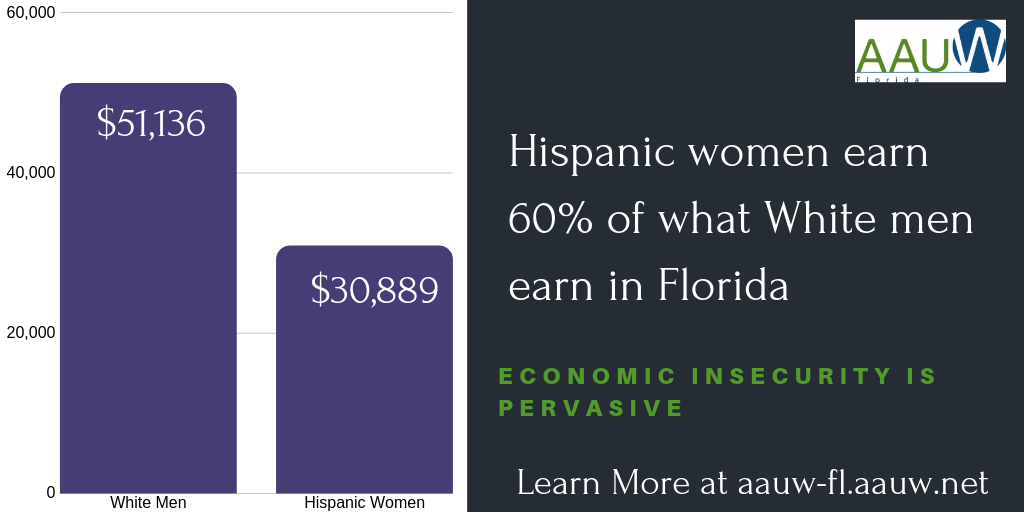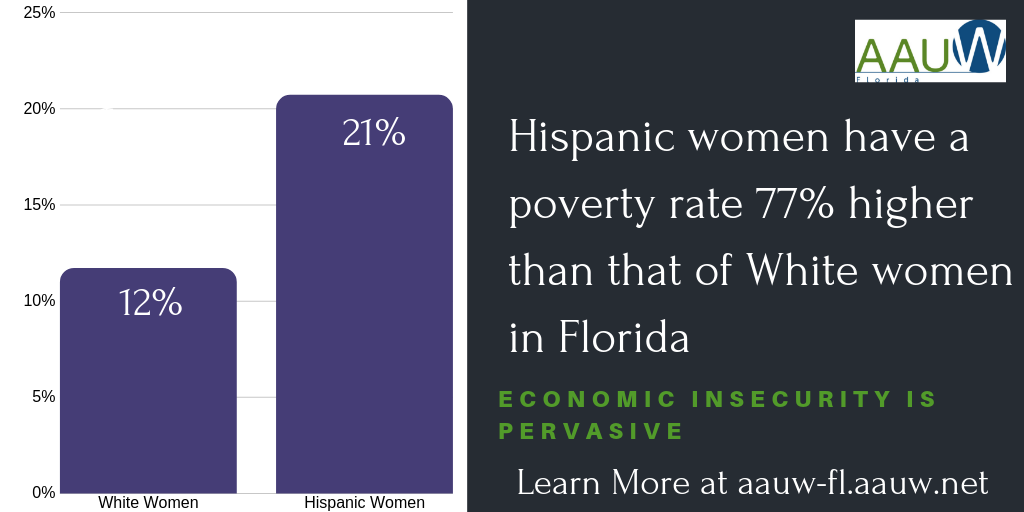Economic Insecurity in Florida, 2022 by Dr. Mary Gatta
This January, 2024 report reviews the most current data to demonstrate that Florida’s women face greater economic insecurity than men. The American Association of University Women (AAUW) Florida advocates for all women to achieve economic security. Using the Elder Index as a benchmark for economic security in retirement and the Basic Economic Security Tables (BEST) for economic security while working, we found that many Floridians faced economic insecurity in 2022. However, women in our state tend to face greater economic insecurity than do men throughout their lives. This policy brief presents data on current economic insecurity rates in Florida and ways to address the crisis.
The Gender Pay Gap Starts Even Before You are Hired Bloomberg June 28, 2023
Branch member Mary Gatta is quoted as well as NACE National Association of Colleges and Employers on paid and unpaid internships.
What to Know About the Gender Pay Gap–Center for American Progress
Important article with statistics showing how the pay gap is trending to equity in 2056. See the data on how the working women have lost more than $61 trillion in wages since 1967 when the US Census Bureau data became available.
The Enduring Grip of the Gender Pay Gap – Pew Research March 1 2023
WORK SMART – FREE Online Salary Negotiation Training
9:40 AM and again at 8:00 PM Listen to Dr. Mary Gatta on First Coast Connect with Melissa Ross talk about the Pay Gap and how to address it.
Listen to Melissa Ross 3/14/23 show – Mary Gatta at about 34 mins
AAUW Supports Measures to Eliminate Gender and Racial Pay Gaps
Salary Transparency Laws and Career Centers
by Dr. Mary Gatta, director of research and public policy with the National Association of Colleges and Employers (NACE)
NACE’s webinar: Closing the Gender Pay Gap
Employers, students, career centers and interested people learn tips and statistics on the pay gap from NACE’s Dr Mary Gatta, MIT’s Mary Jane Daly and MIT’s Deborah Livermore. Learn what can be done to reduce the pay gap.
Women’s Economic Security
UnHappy Hour for Equal Pay Day March 21

All Women’s Equal Pay Day
This date symbolizes how far into the year women must work to earn what men earned in the previous year. Women and men wear RED on this day as a reminder that women are in the red compared to men. See below for more Equal Pay Days based on race and parenting.
AAUW’s The Simple Truth About the Gender Pay Gap – 2022 Update
Gender Pay Gap by State
Full Report: Working Black Women in Florida and Economic Insecurity: A Story of Gender and Racial Inequality
Dr. Mary Gatta, PhD with Jessica Horning, MSSW April 2020
Executive Summary: Black Working Women in Florida
American Association of University Women (AAUW) Flagler, Jacksonville, St. Augustine, Sarasota and
and Tampa Branches supported this research through AAUW-Florida state grants, and the Weston
branch supported it through member contributions
Florida’s Hispanic Women – Striving But Not Economically Thriving
Dr. Mary Gatta, PhD with Jessica Horning, MSSW May 12, 2019
American Association of University Women (AAUW) Daytona Beach, Jacksonville and St. Augustine Branches supported this report and infographics through financial support from members and a grant from AAUW Florida
Executive Summary: Executive Summary: Florida’s Hispanic Women – Striving But Not Economically Thriving
Full Report : Full Report: Florida’s Hispanic Women – Striving But Not Economically Thriving
The Florida Times-Union, Guest Column: Many Hispanic Women Single Moms Struggle in Florida
Women Economic Insecurity and Aging in the Florida Sunshine
2024 Equal Pay Days
March 12 is Equal Pay Day
Women must work until this date to be paid what men were paid as of the end of the previous year. This date is based on the latest U.S. Census figures showing that the average woman who works full time is paid on average just 83 percent of the typical man’s pay. The National Committee on Pay Equity (NCPE) started to report this information in 1996. Each Equal Pay Day raises awareness about the gender wage gap for each subgroup of women. In 2020, the dates needed a new methodology to reflect the effects of the COVID-19 pandemic which pushed many women, especially women of color, into part-time or seasonal work, or out of the workforce all together. (Historically, Equal Pay Day has been calculated using data on full-time, year-round workers.) In 2022, the Equal Pay Day coalition adopted a new, more inclusive methodology. This encompassed a broader cross-section of women, including those who work part time or seasonally, to represent a more accurate picture of how the gender pay gap impacts diverse communities.
- April 3, 2024 Asian American, Native Hawaiian and Pacific Islander Women’s Equal Pay Day
- June 13, 2024 LGBTQIA+ Equal Pay Awareness Day With no data available, the day brings awareness to the wage gap.
- July 9, 2024 Black Women’s Equal Pay Day
- August 7, 2024 Moms’ Equal Pay Day
- August 28, 2024 Native Hawaiian and Pacific Islander Women’s Equal Pay Day
- October 3, 2024 Latina Women’s Equal Pay Day
- November 21, 2024 Native Women’s Equal Pay Day

